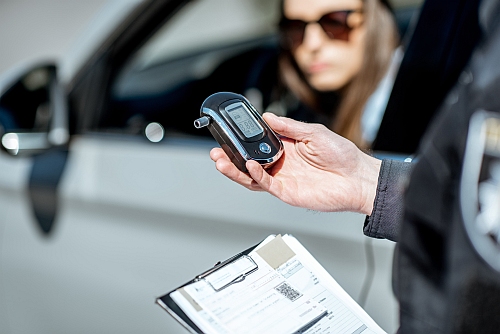- August 30, 2022
Law enforcement officers have the legal backing to stop and observe motorists if they’re driving recklessly or erratically. Once the officer stops you, one of the ways they confirm whether you’re driving under the influence or not is via a breathalyzer test. The test shows the level of your blood alcohol content (BAC).
For a long time, breathalyzer tests have been highly reliable and even the prosecution primarily builds their case around the results of the test. However, in recent times, there have been doubts about the accuracy of a breathalyzer test. This is because several factors like smoking can alter the actual result of a breathalyzer test.
If you or a loved one have been arrested for DUI, you may have a case of a false positive result. The best DUI lawyer in Charleston, SC, can help defend you in cases like this. This article will discuss breathalyzer tests, BAC, and how smoking can affect the results of a breathalyzer test.
What Is a Breathalyzer Test and How Does It Work?
It is crucial for public safety that drunk drivers be taken off the roads. Every day, about 32 people in the United States die in drunk-driving crashes — that’s one person every 45 minutes. In 2020, 11,654 people died in alcohol-impaired driving traffic deaths — a 14% increase from 2019. These deaths were all preventable.
Traditionally, sobriety tests were based on whether drivers could walk in a straight line or touch their noses. Unfortunately, the test can be very inaccurate sometimes, and some drivers who pass it may be driving with a blood alcohol content that is over the legal limit.
This is where the technology of breathalyzer tests came in. In the 1940s, breath alcohol testing devices were first developed for use by police. Then, in 1954, Dr. Robert Borkenstein of the Indiana State Police invented the Breathalyzer, the primary breath alcohol testing device used by law enforcement agencies today.
A breathalyzer test can detect an individual’s blood alcohol concentration (BAC) using their breath.
The Science Behind a Breathalyzer Test
Your blood alcohol concentration can be determined through your breath because of the ‘alveolar air.’ When alcohol is consumed, it is absorbed from the mouth, throat, stomach, and intestines into the bloodstream. Alcohol is neither digested nor chemically changed on absorption.
As blood flows through the lungs, some of the alcohol diffuses through the membranes of the lung’s air sacs (alveoli) into the air, because of the volatility of alcohol. Therefore, the concentration of alcohol in the alveolar air is directly related to the concentration of alcohol in the blood.
Hence, the breathalyzer can test for the level of blood alcohol using the driver’s breath. The ratio of breath alcohol to blood alcohol is 2100:1. The implication of this is that 2,100 milliliters (ml) of alveolar air will contain the same amount of alcohol as 1 ml of blood.
How Does the Breathalyzer Test for Bac?
The ethanol present in alcohol reacts with the reddish-orange potassium dichromate solution in the breathalyzer device. This is a redox reaction and there’s a color change from reddish-orange to green. The degree of the color change is directly related to the level of alcohol in the expelled air.
The officer checks for a deflection in the indicator needle. If the needle moves, it is then brought back to zero with a knob. The demarcation on the knob helps the police determine if the individual is drunk or not.
BAC and the Law
Blood alcohol content (BAC) is a measure of the amount of alcohol present in the bloodstream at a given time. It is expressed in weight (milligrams) per unit of volume (milliliters); BAC levels are usually shown as a percentage. This parameter is used for legal and medical purposes to indicate an individual’s level of intoxication.
In every state, it’s illegal to drive with a BAC of .08% or more. In addition, blood alcohol concentration (BAC) limits for minors laws ban those under the age of 21 from driving with a blood alcohol content above 0.01–0.02%.
Best DUI Lawyer in Charleston Explains How Smoking Affects the Result of a Breathalyzer Test
According to the Centers for Disease Control and Prevention, in 2020, nearly 13 of every 100 U.S. adults aged 18 years or older (12.5%) currently smoked cigarettes. This means an estimated 30.8 million adults in the United States currently smoke cigarettes. For many people, drinking and smoking go hand-in-hand.
There has been recent concern about the inaccuracies of a breathalyzer test and rightly so. However, studies have shown that individuals metabolize alcohol differently and at different paces.
Therefore, a breathalyzer test should not be clear-cut proof of intoxication. A lot of factors affect the result of a breathalyzer test and smoking just happens to be one of them. So, how does smoking affect the test result?
Gastric Emptying
One internal process affected by smoking that ultimately affects the result of a breathalyzer test is gastric emptying. Scientific research shows the effect of smoking on the rate of gastric emptying and blood alcohol concentration.
During the research, both smoking and non-smoking healthy volunteers were given alcohol and the rate of gastric emptying and blood alcohol concentration were then tested. The results showed that the blood alcohol concentration level was significantly lower in smokers than in non-smokers.
The rate of gastric emptying was also slower in the volunteers who smoked. This was attributed to the inverse relationship between gastric emptying and blood alcohol concentration. So, yes, smoking can skew the result of a breathalyzer test.
Acetaldehyde
The previous point shows how smoking can somehow give falsely low breathalyzer results. Sometimes, however, the results may the falsely high. This is due to the presence of the compound acetaldehyde in cigarettes. The breathalyzer tests for all methyl-containing molecules for which acetaldehyde is one.
Unfortunately, the breathalyzer cannot differentiate between alcohol and acetaldehyde. The lung also contains acetaldehyde to some degree. The amount varies amongst individuals, but it is more pronounced in smokers.
This factor alone could contribute to a falsely high result when a law enforcement officer performs this test. If this has been the case for you, the best DUI lawyer in Charleston, SC, can fight your case.
Let the Best DUI Lawyer in Charleston Help You!
Suppose you or a loved one have been arrested for driving under the influence while smoking, and the breathalyzer showed a result higher than the legal limit. In that case, a Charleston, SC, criminal defense attorney can help you fight your case. So don’t assume you’re automatically guilty and book a free consultation with us.







